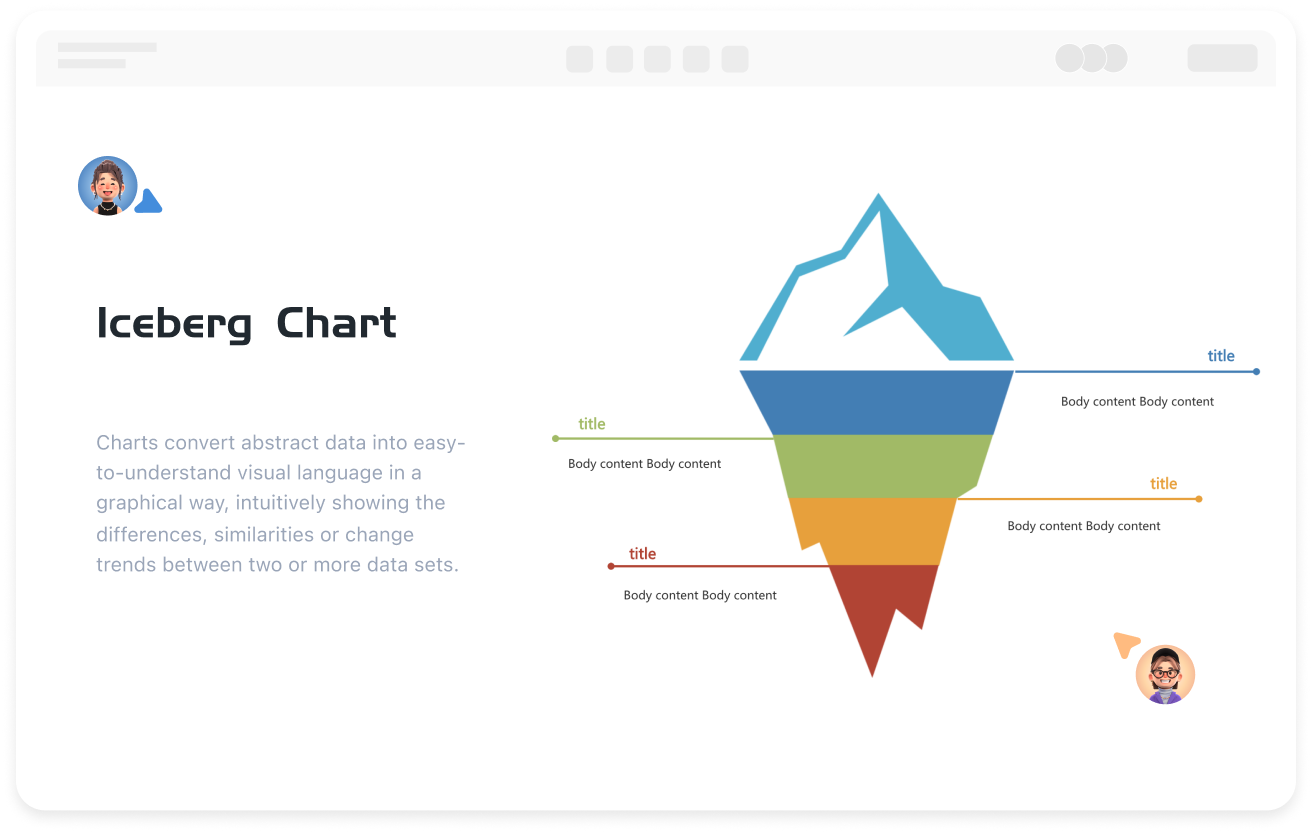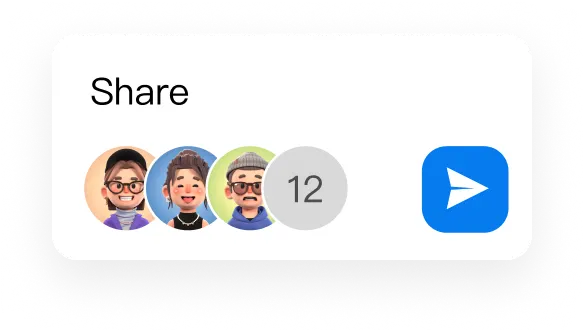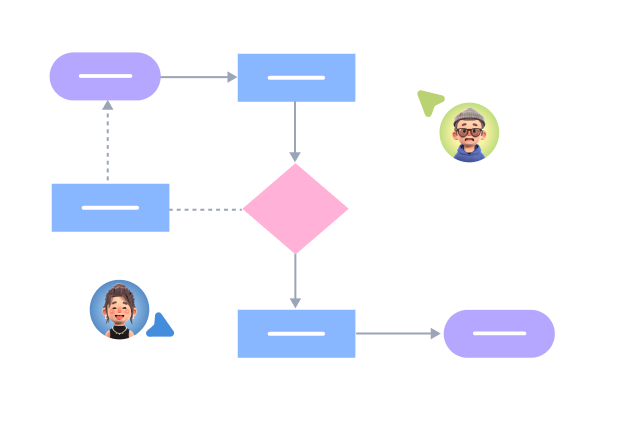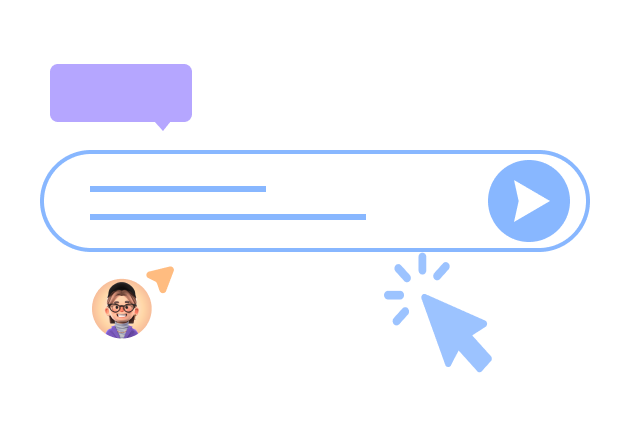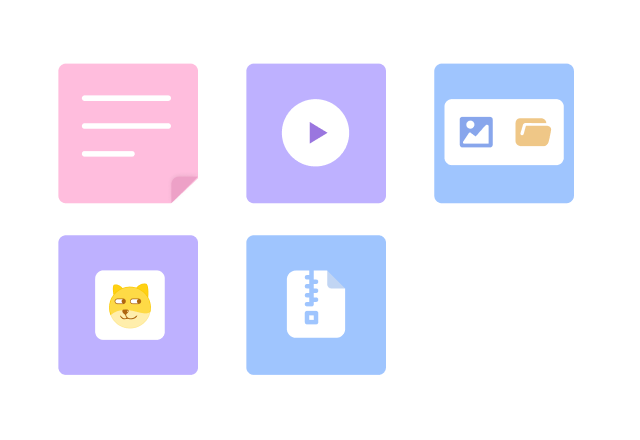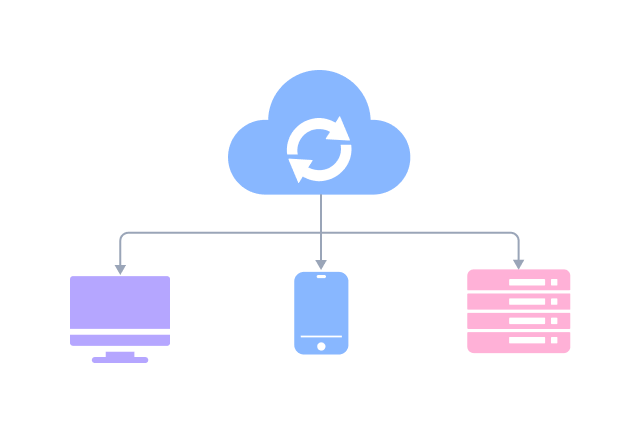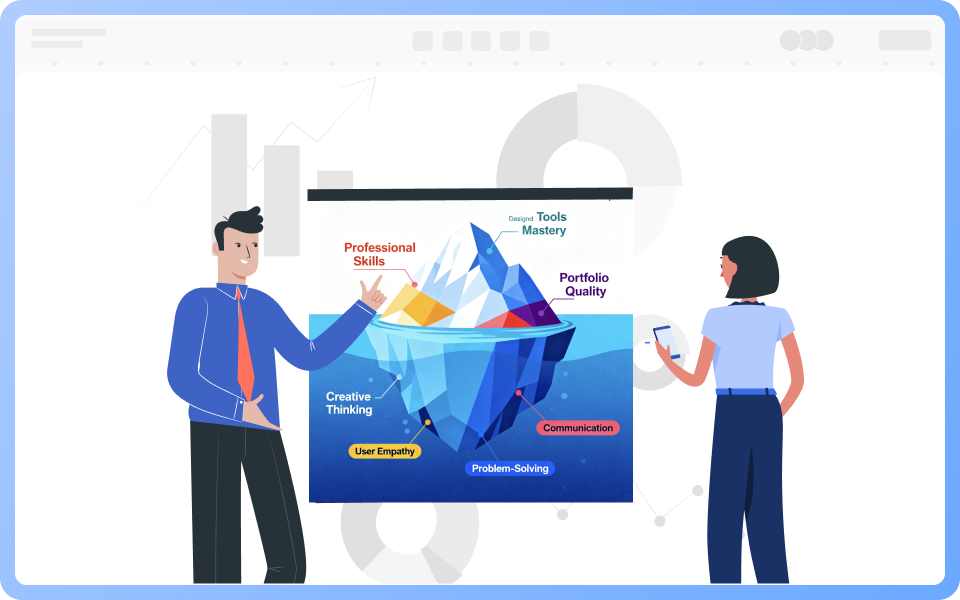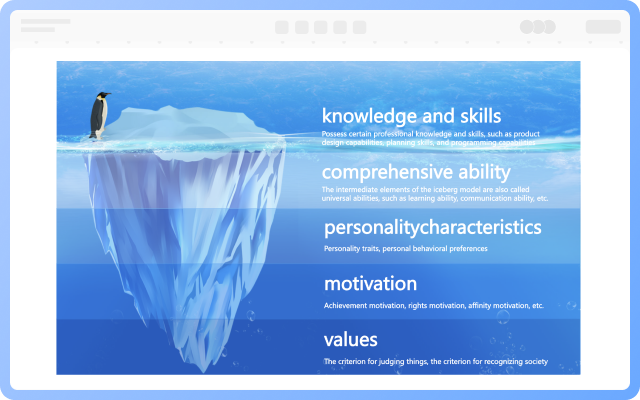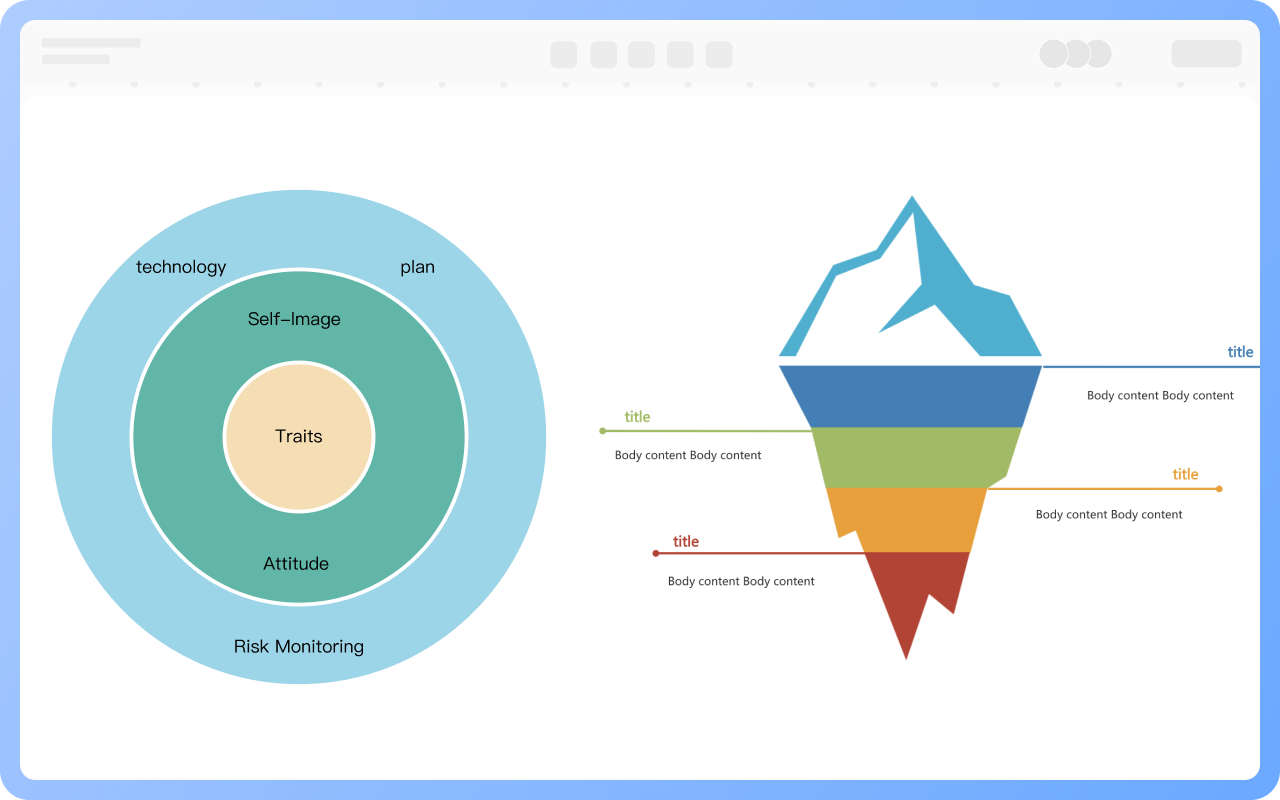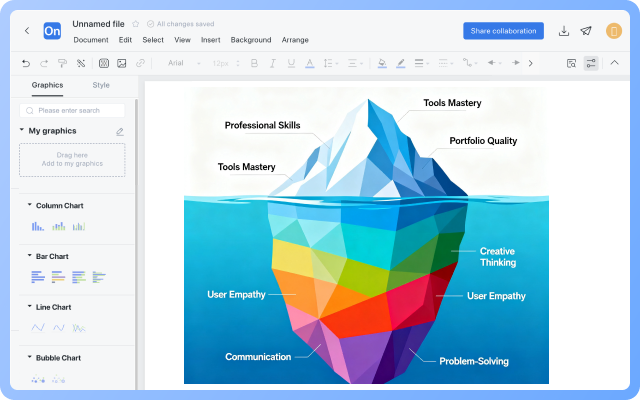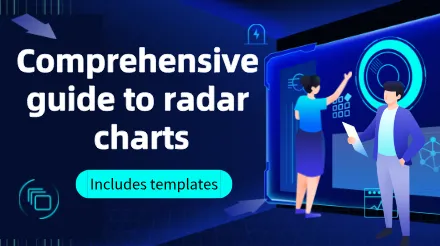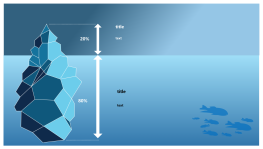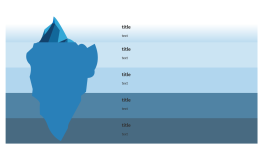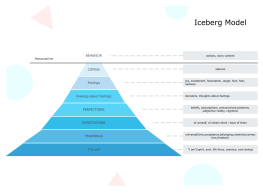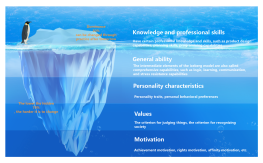1. Knowledge: Factual and experiential information accumulated by an individual in a specific field, such as professional skills and industry knowledge.
2. Skills: The ability to use knowledge in a structured way to complete specific tasks, such as communication skills and project management skills.
3. Abilities: Potential behavioral qualities, such as learning ability, stress resistance, and innovative thinking.
4. Values: Fundamental cognition and beliefs about value orientation (e.g., integrity, innovation, family priority).
5. Personality: Stable personality response patterns, such as extroversion or caution, affecting long-term work performance.
6. Motivation: Deep-seated drives of behavior, including achievement motivation, power motivation, and affiliation motivation. These elements are often difficult to detect but play a decisive role in long-term behavior.

